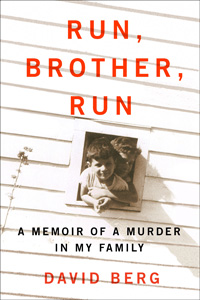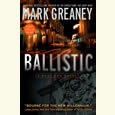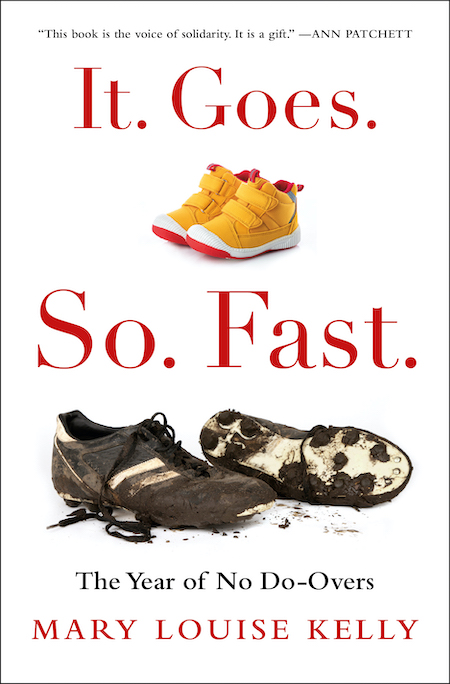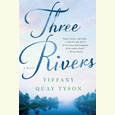A Murdered Brother, Lost and Found
In an astonishing memoir, David Berg pieces together his brother’s life and death
The fairest description of Run, Brother, Run, the superb memoir by New York lawyer David Berg, comes from Berg himself in the book’s prologue:
The first autopsy report I ever read was my brother’s. Even now, more than four decades later, there is rarely a day that goes by when I don’t recall, unbidden, its haunting cause of death: “Gunshot wound to the head through-and-through.” Since that day we buried him four decades ago, I have rarely talked about Alan and almost never about how he died. My children knew nothing of their uncle, and some of my friends were unaware that I ever had a brother, never mind that he was murdered. It wasn’t that he didn’t matter; I was closer to Alan than I’ve been to anyone. I just couldn’t remember why. A violent death can do that: saturate your most vivid memories of the victim’s life, like blood staining dirt on a deserted road. Until finally, in 2008, I decided to write this book, to give Alan a life of sorts, and, to the extent possible, set the record straight about his murder and him, his astonishing qualities and alarming flaws included.
 Run, Brother, Run traces the split arcs of the brothers’ lives, beginning in childhood and continuing beyond Alan’s murder into its tangled aftermath. In 1968 Alan was murdered in Texas by Charles Harrelson, a hired assassin who later gained widespread notoriety for killing a federal judge, among others; there were even allegations that he bore responsibility for fatally shooting President John F. Kennedy. The father of actor Woody Harrelson, Charles Harrelson was tried for Alan’s murder but, much to the permanent agony of Berg and his family, he was acquitted.
Run, Brother, Run traces the split arcs of the brothers’ lives, beginning in childhood and continuing beyond Alan’s murder into its tangled aftermath. In 1968 Alan was murdered in Texas by Charles Harrelson, a hired assassin who later gained widespread notoriety for killing a federal judge, among others; there were even allegations that he bore responsibility for fatally shooting President John F. Kennedy. The father of actor Woody Harrelson, Charles Harrelson was tried for Alan’s murder but, much to the permanent agony of Berg and his family, he was acquitted.
In unraveling his brother’s life and death, Berg begins in 1946, when he was four and Alan ten, with their parents’ divorce. That year their father married an eighteen-year-old waitress, Dot. The brothers were divvied up: Alan went with their father while Berg stayed with their pregnant mother, who possessed the “temperament of Henry VIII.” Over the next six years, the brothers lived in different states, each raised as only sons. Berg’s mother, who forever after referred to her former husband as “that momser” (Yiddish for bastard), moved from Kalamazoo to her parents’ home in Arkansas, where Berg grew up “lacking for nothing.” By contrast, Alan—who blamed himself for his parents’ divorce—was shuttled to four cities in as many years, until his unrelenting clashes with his stepmother led to his being sent to Georgia Military Academy. When Berg considers what went wrong for his brother, he always returns to the “irremediable damage that our parents’ separation and all its repercussions had on the way he viewed himself and the world.”
Following his parents’ split, Berg learned the deepest source of his father’s shame: how close Nat had come to realizing his true dream of becoming a doctor. Six weeks before graduating from medical school, Nat walked out of a final convinced he’d failed. He stayed up all night writing an alternate response and bribed a nurse to exchange his new paper for the previous day’s exam. The nurse reported Nat to the dean, who expelled him. Later, peddling cheap life insurance, “he awakened each morning humiliated and consumed by his final hours in medical school.” Nat himself never shared this story with his sons; it was the boys’ mother who repeated it, over and over, “as proof of the failed character” of the husband who had left her.
 After rocky stints in the Navy and on a used-car lot, Alan finished college and, at his father’s insistence, applied to medical schools. He called Berg, then a freshman at Tulane, to share the incredible news that he’d been accepted. As Alan and Berg cried, their father took the phone from Alan. “That brother of yours is really something,” he bragged. But later, after a vicious fight with Nat, he disappeared and never showed up for medical school.
After rocky stints in the Navy and on a used-car lot, Alan finished college and, at his father’s insistence, applied to medical schools. He called Berg, then a freshman at Tulane, to share the incredible news that he’d been accepted. As Alan and Berg cried, their father took the phone from Alan. “That brother of yours is really something,” he bragged. But later, after a vicious fight with Nat, he disappeared and never showed up for medical school.
By twenty-six, Alan had been married twice (“three times if you believe the Mexico rumor, which I do,” Berg writes), before finding happiness with a woman named Harriet. They married and went on to have children. But while Berg waded through law school, Alan got hooked on gambling, accruing massive debts just as an employee was stealing from the business he and Nat shared. These developments set into motion a calamitous series of events. Harriet was expecting their third child when Alan disappeared.
What followed was a game of deception involving crooked investigators, shoddy police work, and repeated demands for Nat to pay thousands of dollars for information leading to his son’s body. Berg pieces together the death and events leading up to it, and recounts the excruciating months the family spent waiting for definitive word of what had happened to Alan.
The primary focus of Run, Brother, Run is Alan’s murder, Harrelson’s trial, and the ensuing “collateral damage” inflicted on Berg’s family, though the book includes fascinating stories from Berg’s legal career. The author of The Trial Lawyer: What It Takes to Win (2003) as well as numerous essays in The New York Times and other publications, Berg is a very fine writer: thorough, lucid, and logical but never dry. The emotional resonance and sheer vital force of this story extend far beyond its pages. Run, Brother, Run offers an engrossing tale of murder and, on a deeper level, the contrasting circumstances and choices that led two brothers to starkly dissimilar lives. Perhaps more than either, however, it is the story of a bond so strong that his older brother’s absence still wakes Berg up in the middle of the night.
David Berg will discuss and sign Run, Brother, Run at Parnassus Books in Nashville on June 15, 2013, at 2 p.m.


